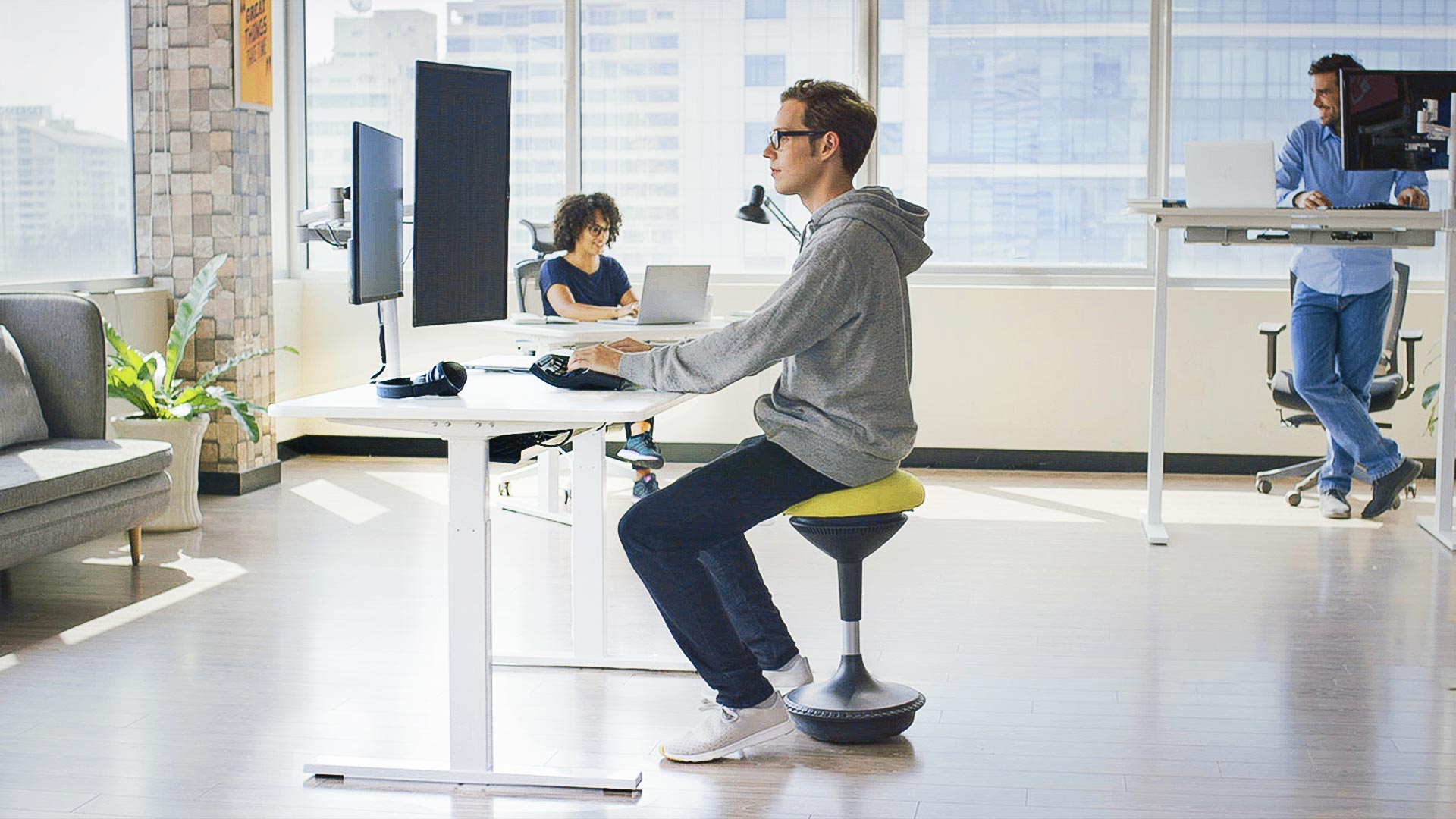
Standing Desk vs Sitting Desk: Health, Productivity & Cost Comparison
Table of Contents
In today’s modern work environment, the choice between a standing desk vs sitting desk is more than just a matter of style—it’s a decision that can impact your health, productivity, and overall well-being. As remote work and flexible office spaces become the norm, many are asking, “is a standing desk better than a sitting desk?” This article delves into the key factors you should consider when deciding whether to work standing vs sitting, comparing the benefits and drawbacks of each option.
Below is a summary table that quickly outlines the key factors to consider when comparing a standing desk vs sitting desk. This table highlights the main differences in ergonomics, health impacts, productivity, adjustability, cost, design, and space requirements. Use it as a quick reference guide before diving into the detailed analysis that follows.
Aspect | Standing Desk | Sitting Desk |
Ergonomics & Posture | Promotes upright posture with adjustable settings; may need accessories like anti-fatigue mats to maintain comfort during prolonged standing. | Provides stable support with ergonomic chairs; however, improper setup can lead to poor posture over time. |
Health Impacts | Boosts circulation and burns extra calories, reducing risks like back pain; prolonged standing without breaks may lead to leg fatigue or joint stress. | Comfortable for extended tasks but associated with risks such as obesity, heart disease, and back pain due to inactivity. |
Productivity & Energy | Enhances energy and alertness, helping to reduce the mid-afternoon slump; encourages movement which can boost overall productivity. | Offers comfort and stability ideal for focused work; however, extended sitting can contribute to fatigue and decreased engagement. |
Adjustability & Flexibility | Often features motorized systems with programmable presets, robust frame construction, and safety features (e.g., anti-collision sensors) for smooth transitions. | Generally fixed with limited adjustment options; designed specifically for sitting, offering a simpler and more static setup. |
Cost & Value | Typically higher upfront cost, but long-term health and productivity benefits may justify the investment; budget-friendly models are also available. | Usually more affordable and widely available, though potential hidden costs may arise from health-related issues over time. |
Design & Aesthetics | Modern, sleek designs that complement contemporary, minimalist workspaces while providing a dynamic look. | Versatile styles range from traditional to modern; tailored to fit various office environments and personal style preferences. |
Space & Setup Requirements | Compact and space-saving, ideal for smaller workspaces; often integrates easily with accessories like cable management systems and desk attachments. | May require more room to accommodate ergonomic chairs and additional accessories; better suited for larger or more spacious offices. |
For a deeper understanding of each factor and how it influences your workspace and well-being, read on to explore our comprehensive comparison.
1. Ergonomics & Posture
Proper standing desk ergonomics is essential for maintaining a healthy posture throughout the day. When comparing a standing desk vs sitting desk, consider how each supports your natural body alignment:
- Standing Desks:
Often designed to encourage better spinal alignment, standing desks help reduce slouching and can decrease the risk of chronic back pain. Adjustable options allow you to fine-tune the desk height, ensuring your elbows and wrists are properly aligned while working.
- Sitting Desks:
Traditional sitting desks can be comfortable for long hours if paired with an ergonomically designed chair. However, many sitting setups may encourage poor posture if the chair and desk are not properly matched.
Both types have their merits, but understanding the nuances of ergonomic support is key to choosing the right setup for your needs.
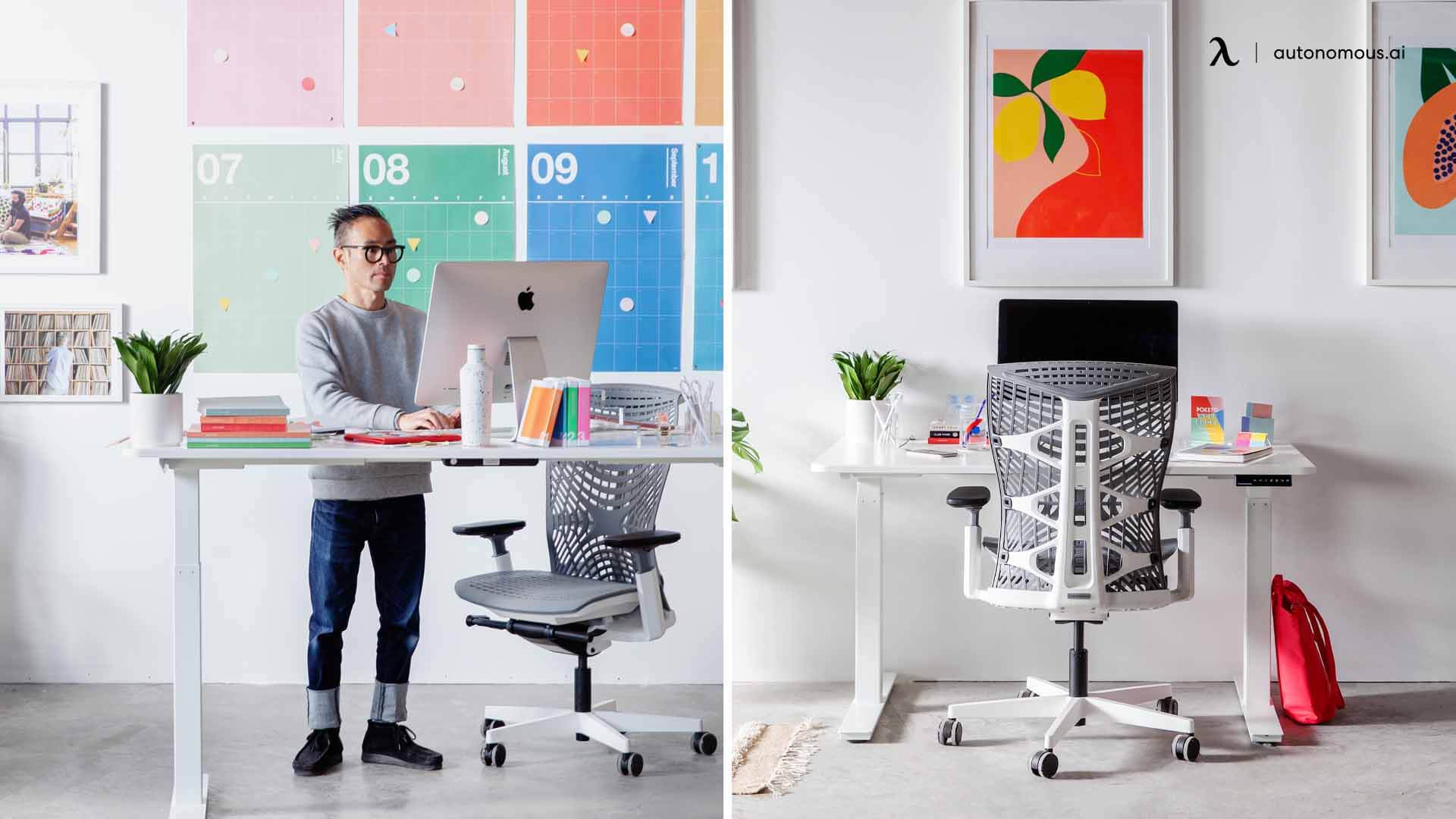
2. Health Impacts
Health is a major consideration when evaluating standing vs sitting at a desk. Here’s how each option can affect your well-being:
- Standing Desks:
The movement involved in standing can help boost circulation and burn extra calories throughout the day. For example, research on calories burned standing vs sitting reveals that even subtle movements while standing contribute to a higher energy expenditure. Studies have also indicated that standing periodically can lower the risk of cardiovascular disease and reduce the likelihood of developing musculoskeletal issues.
While using a standing desk for weight loss isn’t a magic solution, it can contribute to increased daily activity—especially when paired with other healthy practices like regular stretching, walking breaks, and maintaining good posture.
For a deeper dive into these advantages, see the detailed overview of the health benefits of standing desk. However, it’s important to note that prolonged standing without proper breaks or supportive footwear can lead to leg fatigue or joint stress. If you’re curious whether does a standing desk burn more calories, the answer is nuanced and depends on factors like overall movement and duration.
- Sitting Desks:
While sitting may be easier on the joints initially, excessive sitting has been linked to increased risks of obesity, heart disease, and lower back pain. It’s essential to incorporate regular movement if you rely on a sitting desk to mitigate these risks.
When evaluating the benefits of standing desk vs sitting, it’s important to balance active periods with rest, regardless of the primary desk style you choose.

3. Productivity & Energy Levels
The debate over work standing vs sitting often includes considerations of productivity and energy:
- Standing Desks:
Many users report feeling more energized and alert when they alternate between standing and sitting. The act of standing can stimulate blood flow, potentially leading to enhanced focus and a reduction in the mid-afternoon slump. For tips on optimizing your work area for maximum output, check out our productivity desk setup.
- Sitting Desks:
Sitting can provide a sense of comfort and stability, especially for tasks that require intense concentration and fine motor skills. However, long periods of inactivity may contribute to fatigue and reduced cognitive engagement. To keep your day dynamic, explore some productivity gadgets that can help you stay active even at your desk.
Ultimately, balancing your energy levels is key. Integrating both options through adjustable desks may be the perfect solution for maintaining a productive work environment throughout your day.

4. Adjustability & Flexibility
The ability to switch between positions is a growing trend in office design. When you compare a stand up desk vs sitting desk, the flexibility of adjustable or sit-stand desks stands out:
- Adjustable Desks:
These innovative solutions let you seamlessly transition from sitting to standing. Advanced models feature robust frame construction using materials like steel or aluminum to ensure stability even when fully extended. Many adjustable desks now offer motorized lifting systems that provide smooth, quiet height adjustments. Dual-motor setups often allow for faster, more reliable changes, and programmable memory settings let you save your preferred heights—if you're curious about how to set standing desk presets, you can easily input your ideal settings.
Determining the optimal height is also crucial for ergonomic support. Discover how high should a standing desk be to ensure maximum comfort and efficiency. Advanced models include safety features like anti-collision sensors to halt movement if an obstacle is detected. Should you ever experience issues—such as your desk not responding properly—resources on standing desk not going up or how to reset your standing desk can be invaluable. Additionally, knowing how to unlock your standing desk can help with maintenance and troubleshooting.
For those seeking a more budget-friendly option, manual systems with a lever or crank mechanism still deliver reliable performance while offering the flexibility you need.
- Fixed Desks:
While they might be less versatile, fixed desks offer excellent stability with a dedicated design for either sitting or standing.
These setups are ideal if your daily workflow is consistent, and you don’t require frequent position changes.
Choosing between adjustable and fixed options ultimately depends on your daily tasks, budget, and personal comfort preferences. Incorporating advanced adjustability features into your workspace can help prevent the negative effects of prolonged static posture while boosting overall productivity.
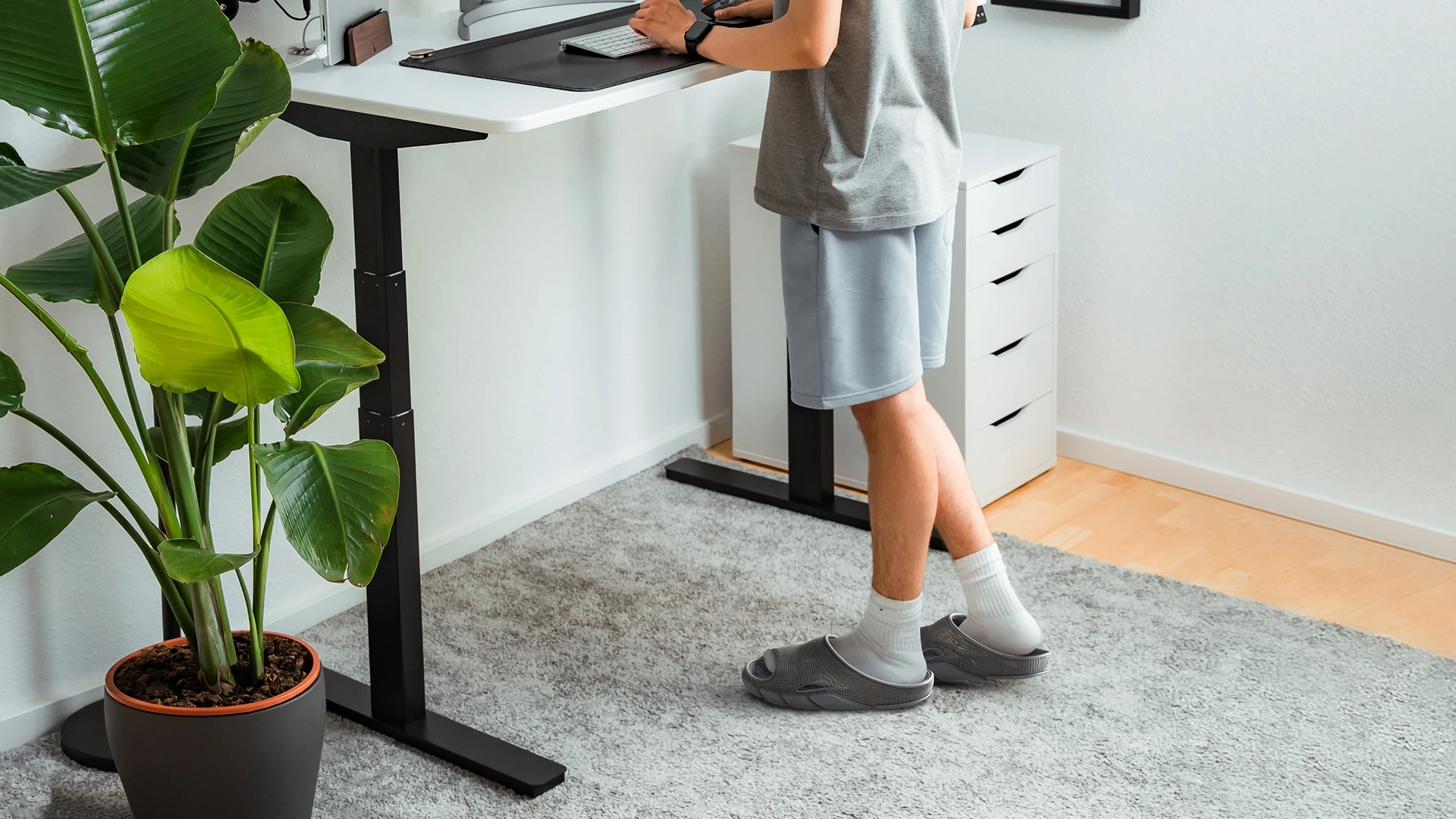
5. Cost & Value
Budget considerations often play a significant role in the decision-making process. Here’s how the two options stack up:
- Standing Desks: Typically, high-quality standing desks or adjustable sit-stand models may come with a higher initial cost. However, many users find that the long-term health benefits and increased productivity justify the investment. For those on a tighter budget, there are plenty of options, including standing desks under $200, standing desks under $500, and even standing desks under $100. Additionally, guides to finding an inexpensive standing desk can help you secure a cost-effective solution without compromising on quality.
- Sitting Desks: Traditional sitting desks are often more affordable and widely available. Yet, if you experience discomfort or health issues, the hidden costs associated with medical care or decreased efficiency might outweigh the savings.
Evaluating the stand up desk vs sitting desk from a cost perspective means considering not only upfront expenses but also the long-term value of improved health and work performance.To get a sense of pricing and factors that influence cost, check out how much does a desk cost.
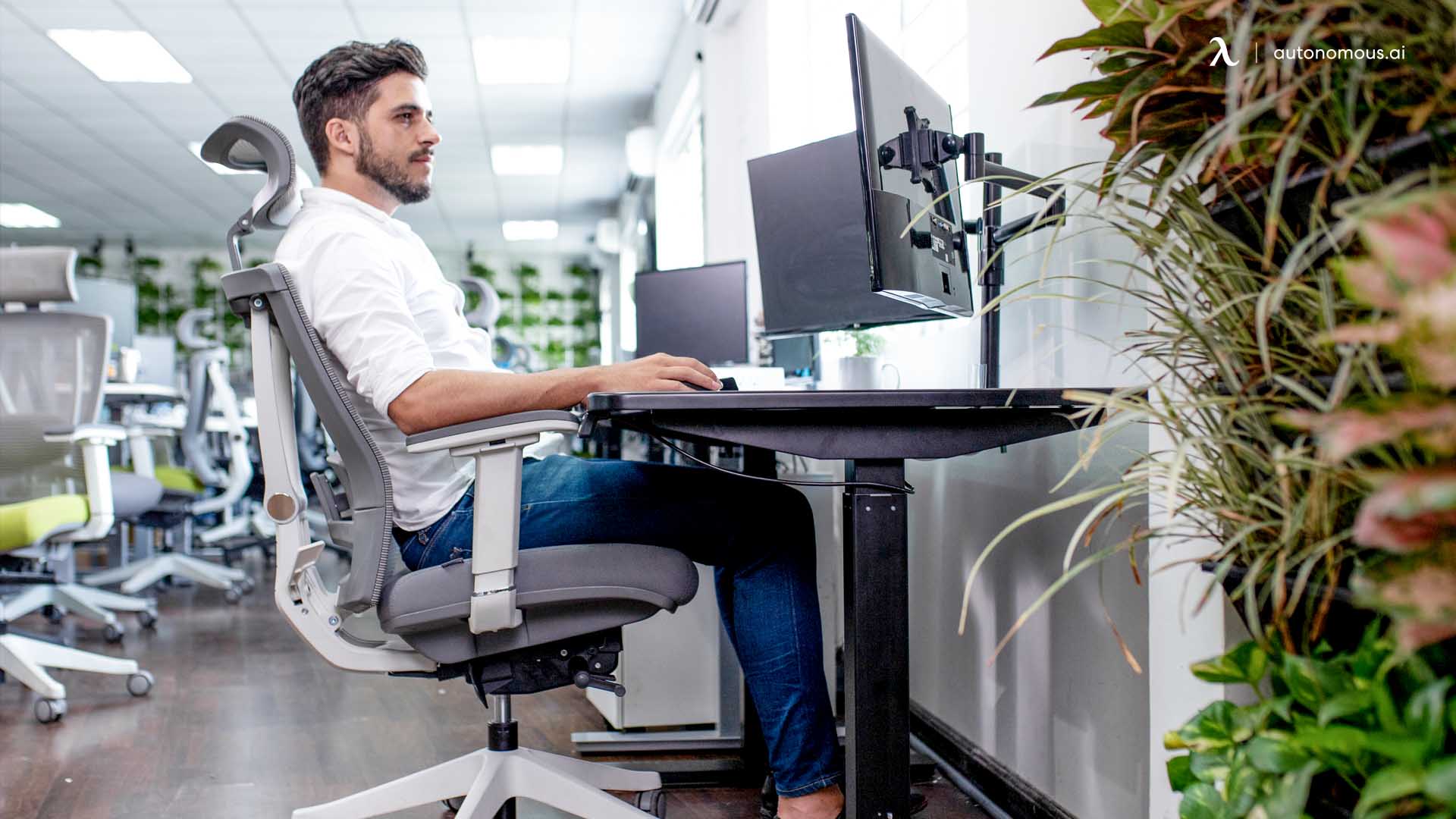
6. Design & Aesthetics
Aesthetics and design play a crucial role in your workspace’s ambiance. Here’s what to consider:
- Standing Desks: Modern standing desks tend to feature sleek, minimalist designs that blend well with contemporary office decor. They can make a bold statement while also providing functional benefits.
- Sitting Desks: With a wide range of styles available, sitting desks can cater to both traditional and modern tastes. Office desk designs often prioritizes comfort and stability, which can contribute to a calming work environment.
Choosing between a standing desk vs sitting desk may also come down to how each fits into your overall workspace design and personal style.
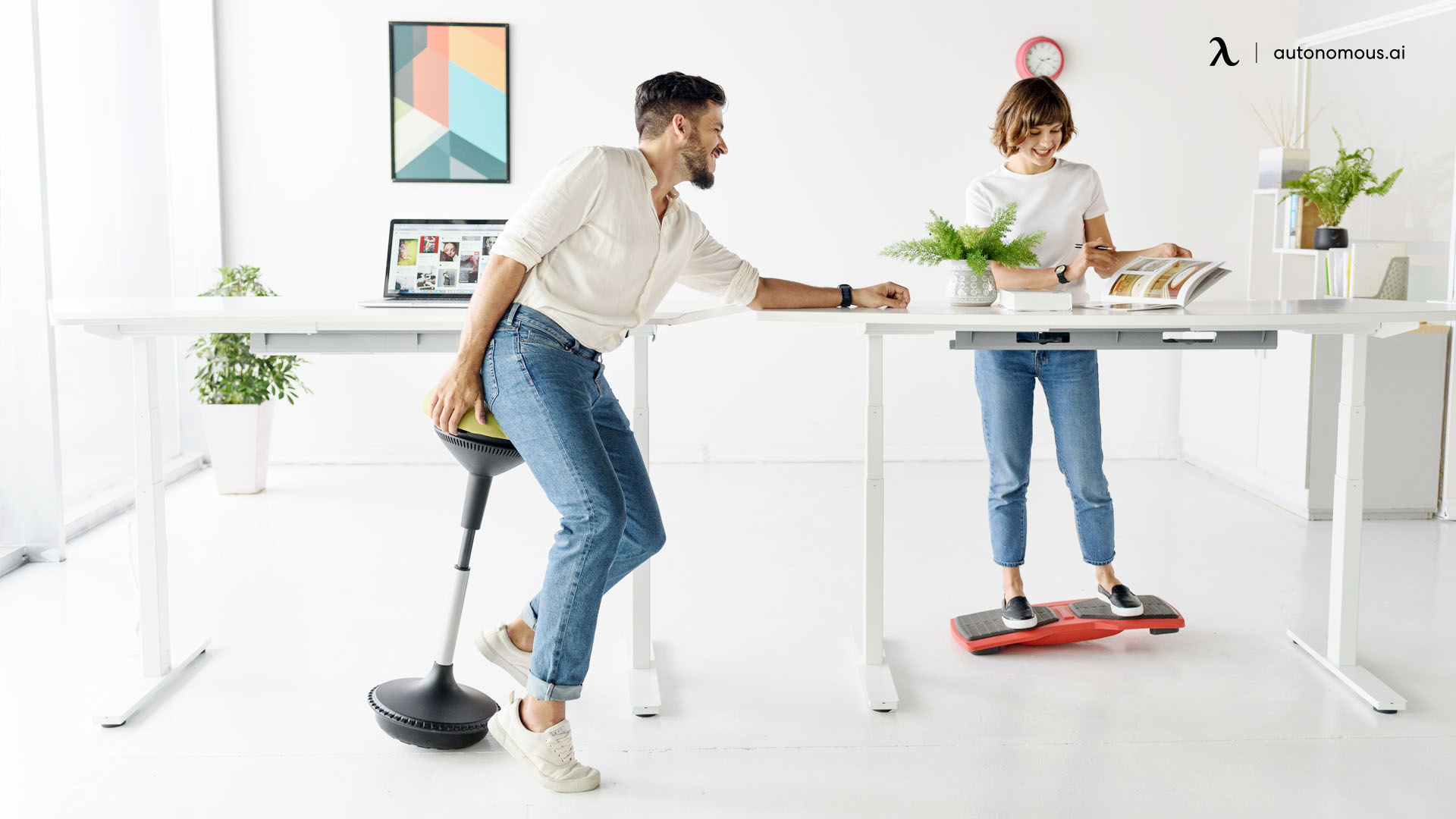
7. Space & Setup Requirements
The physical space available in your work area is another important factor:
- Standing Desks:
Often designed to be more compact, many standing desks are ideal for smaller or minimalist workspaces. Their streamlined design can free up valuable floor space while still accommodating essential features. For instance, you might consider adding a standing desk attachment to enhance functionality without sacrificing space. Additionally, integrating accessories such as a balance board for standing desk or effective cable management for standing desk can help maintain an organized, clutter-free setup. For gamers, a specialized standing desk gaming setup might be an excellent choice to optimize performance in a limited space.
- Sitting Desks:
Depending on the design, sitting desks can sometimes require more room, especially when you account for ergonomic chairs and additional accessories that enhance comfort and productivity. These setups are often better suited for more spacious office environments where you have the flexibility to arrange a comprehensive workstation.
When deciding between these options, consider how each desk will integrate with your current workspace layout and your daily work routine. For a complete guide on setting up your workspace efficiently, you might also explore a standing desk setup and check out the essential standing desk accessories available to create the most functional environment.
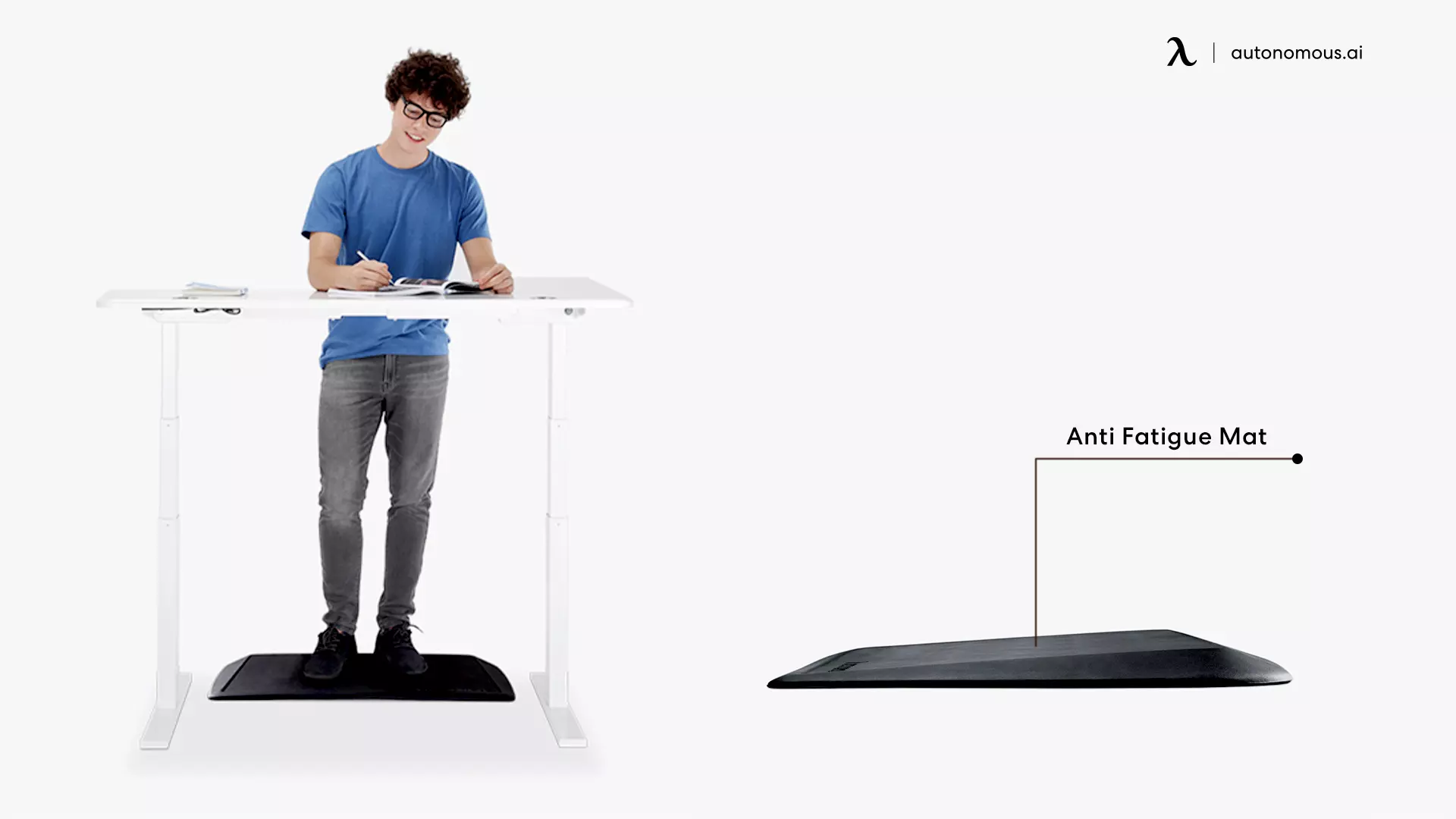
8. FAQs
Is a standing desk better than a sitting desk?
The answer depends on your personal work style and health needs. While standing desks can boost energy and improve posture, sitting desks provide stability and comfort for tasks requiring prolonged focus. Alternating between the two might offer the best benefits.
What are the main benefits of a stand up desk vs sitting desk?
Stand up desks can enhance circulation, help burn extra calories, and reduce the risk of chronic back pain. In contrast, sitting desks are ideal for comfort and sustained concentration during detailed work tasks.
How can I incorporate both standing and sitting into my workday?
Consider an adjustable sit-stand desk that allows you to change positions easily. Incorporating regular breaks, using ergonomic accessories, and gradually increasing standing time can help create a balanced routine.
What should I consider when choosing between work standing vs sitting?
Evaluate factors such as ergonomics, health impacts, productivity, adjustability, cost, design, and space requirements. Your personal comfort and the specific demands of your work tasks will guide your decision.
Are there any risks associated with using a standing desk all day?
Yes, prolonged standing without breaks can lead to leg fatigue and joint stress. It’s important to alternate between standing and sitting, and use supportive footwear and anti-fatigue mats to minimize these risks.
How often should you stand up from your desk?
Experts suggest taking regular breaks to stand up and move around throughout your day. For more detailed recommendations, see how often should you get up from your desk.
How long should you stand at a standing desk?
The ideal duration varies, but it's generally recommended to alternate between sitting and standing to avoid fatigue. Learn more about optimal timing in how long should you stand at a standing desk.
How should you stand at a standing desk?
Maintaining proper posture is crucial to maximizing the benefits of a standing desk. For practical tips on posture and positioning, check out how to stand at a standing desk.
Conclusion
Ultimately, the decision between a standing desk vs sitting desk depends on your individual needs, work habits, and health considerations. Both options offer unique advantages, and many modern workplaces are turning to adjustable sit-stand desks to combine the best of both worlds. Whether you're asking, “is standing at your desk better than sitting?” or exploring the benefits of standing desk vs sitting, the ideal solution promotes balance, comfort, and productivity throughout your day.
It’s also worth remembering that no desk—whether standing, sitting, or adjustable—is perfect for everyone. The effectiveness of a standing desk depends heavily on how it’s used, your daily routine, and even your overall fitness level. Insights from the standing desk pros and cons show that while these desks can deliver meaningful health and productivity gains, they also come with limitations that need to be managed. Finding the right desk setup is less about choosing a flawless product and more about adapting your workspace to fit your body, your work style, and your long-term comfort.
Spread the word
.svg)







